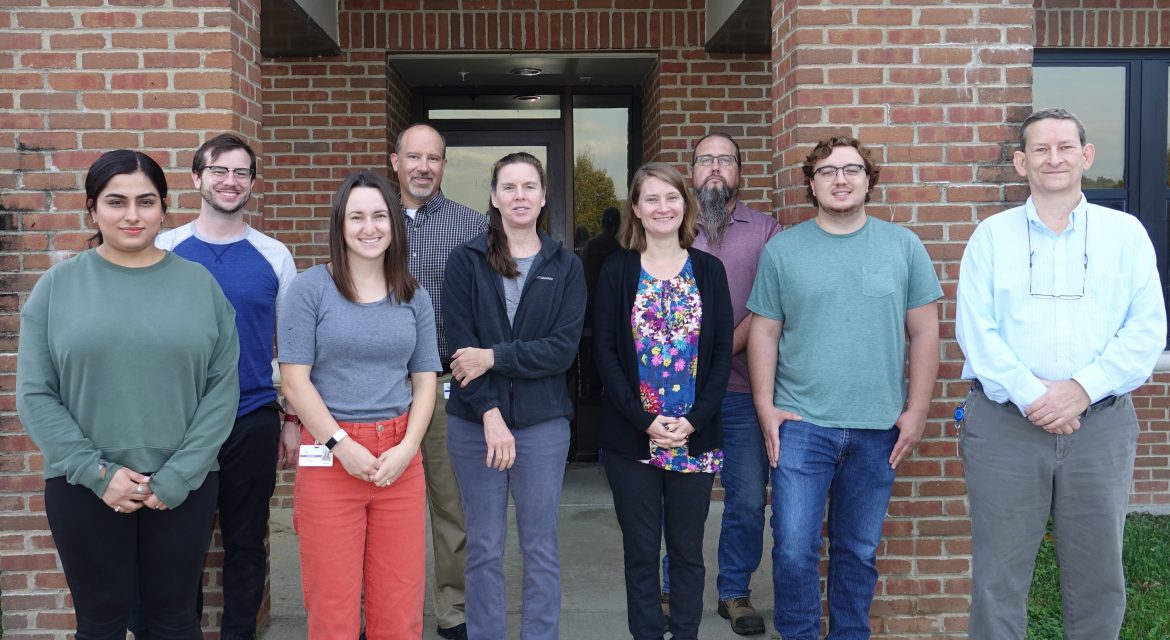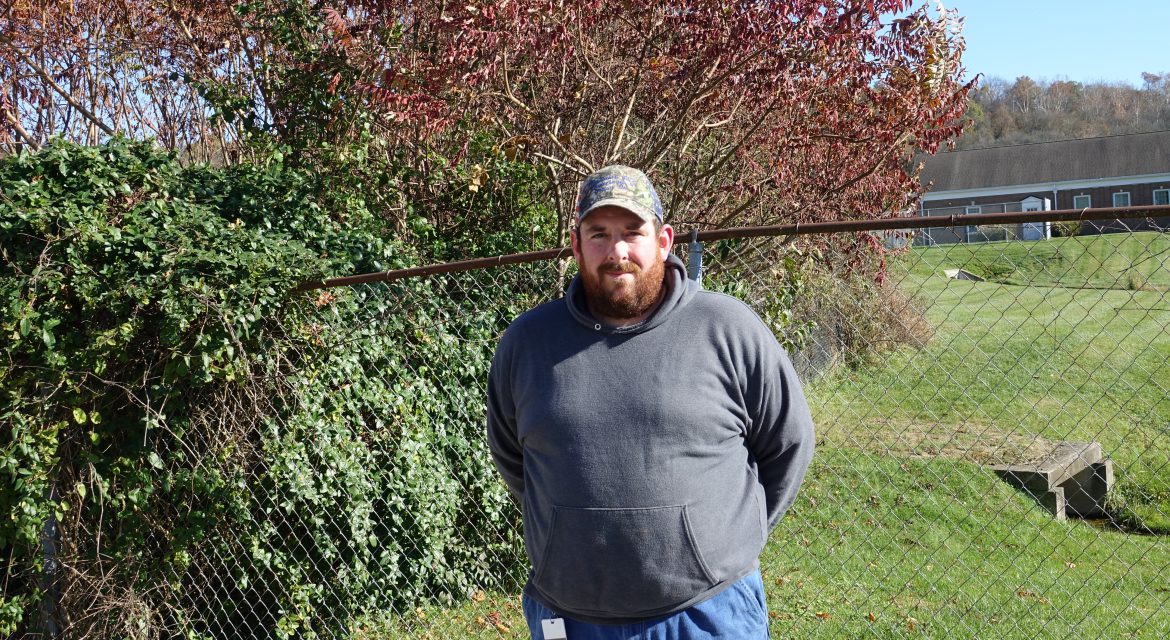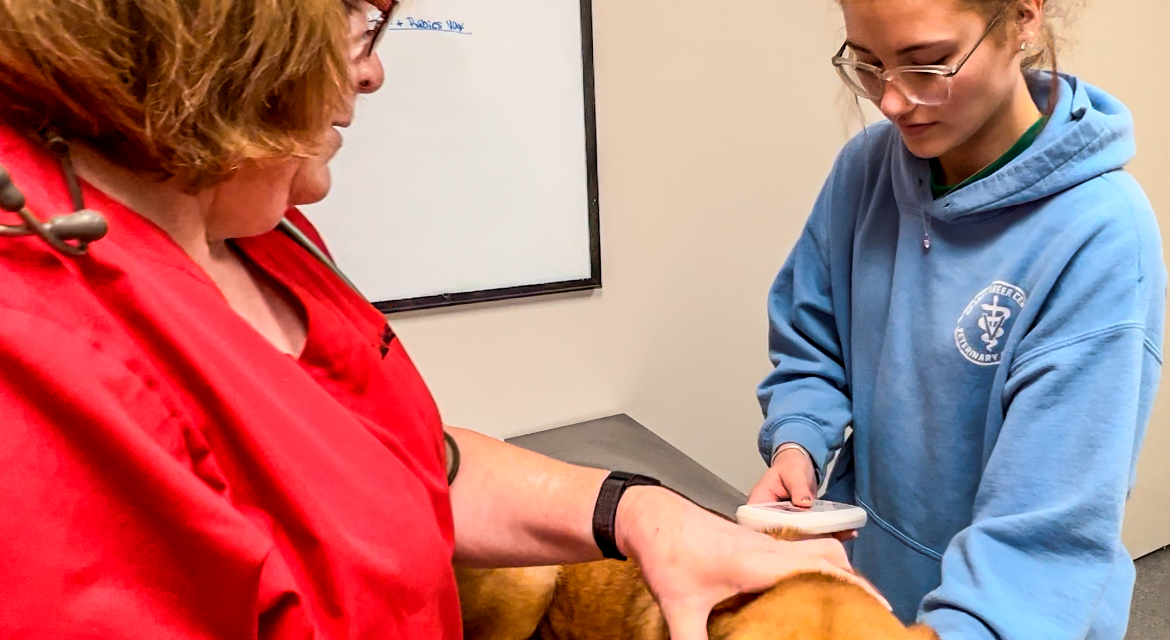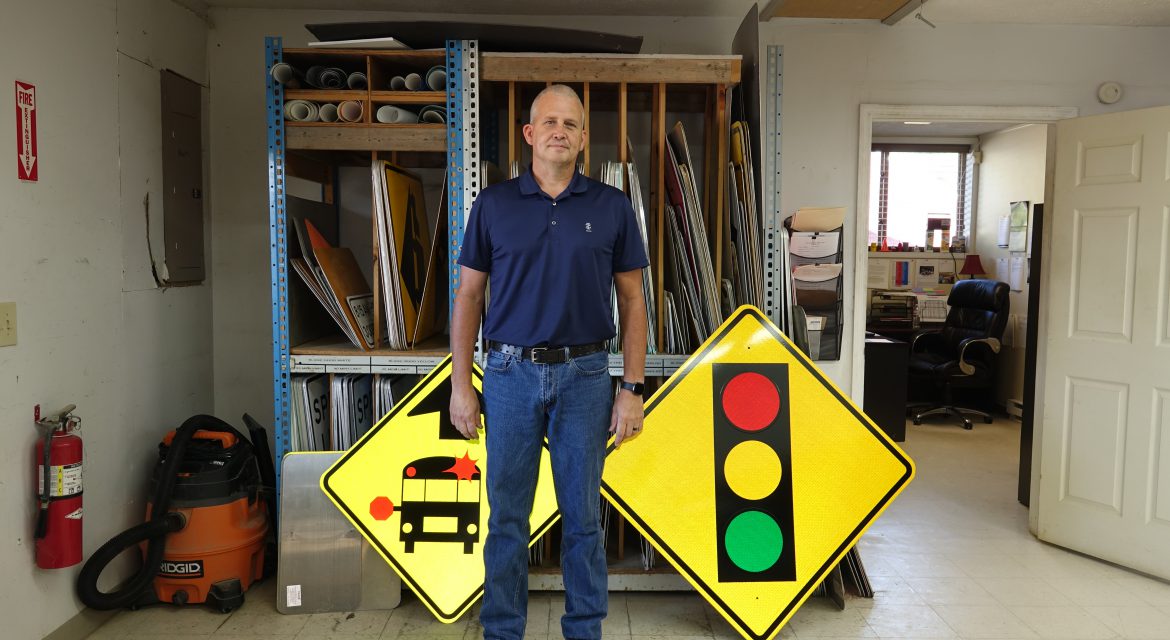
In July, the Clermont County Chamber of Commerce recognized Clermont County Public Health and Emergency Management Agency (EMA) for their response to the Covid-19 Pandemic. Both agencies have worked tirelessly to address the needs of residents, public safety partners, and local communities.
to the Covid-19 Pandemic. Both agencies have worked tirelessly to address the needs of residents, public safety partners, and local communities.
The year started with encouraging news as vaccines were administered to healthcare workers and public safety partners. With the high demand and low vaccine supply, EMA established a call center to answer questions and get residents registered for the vaccine waitlist. The first public vaccine clinic for residents 80 and older was on Jan. 21. As the vaccine supply increased and eligibility expanded, Public Health partnered with UC Clermont College to open a mass vaccination site. The new site could accommodate up to 750 people per day.
To expand access, Public Health and EMA worked to identify community-based vaccine locations to make it more convenient for residents to get vaccinated throughout the county. Some of these locations included fire stations, community buildings, schools, and private businesses.
To date, Clermont County Public Health has vaccinated more than 39,446 individuals ranging in age from 5 to 102.
| Jan. | Feb. | Mar. | Apr. | May. | June. | July. | Aug. | Sep. | Oct. | Nov. | Dec. | Total as of 10.31.21 |
| 2,556 | 4,475 | 11,184 | 14,164 | 4,253 | 1,329 | 231 | 267 | 215 | 772 | 39,446 |
Public Health and EMA continue to lead the effort to respond to and recover Covid-19. These agencies continue to coordinate resources and share information with local public safety partners as well as provide support to individuals and families in isolation/quarantine. To date, EMA has worked with the United Way and local food panties to provide more than 105 food deliveries to individuals and families during their isolation/quarantine periods. Vaccinations will continue to be available for all eligible individuals through Clermont County Public Health.

BATAVIA, OH — New technology allows Clermont County to take emergency calls and dispatch help with speed and precision undreamed of just a few years ago.
“It has revolutionized 911,” said Dominick Daulton, program administrator, Department of Public Safety Services. “It’s truly impressive.”
The department implemented RapidSOS in 2018 to provide more accurate location of 911 callers. The free technology uses GPS from cell phones.
“It’s a huge game-changer for dispatchers in being able to locate callers more quickly,” Daulton said. “The location is available on dispatchers’ computer screens before they even answer the phone.”
The department’s 911 Center is the primary public safety answering point for Clermont County. Twelve emergency resource technicians/dispatchers and four supervisors handle calls and dispatch services for all townships and villages in Clermont County, except for Milford, Loveland and Union Township. The center receives 13,000 calls per month on average, about 5,300 for 911 emergencies. Dispatchers enter information in sophisticated Computer Aided Dispatch (CAD) systems. They strive to have help dispatched within 62 seconds of receiving a call.
RapidSOS started as a website where dispatchers had to manually type in the phone number each time a call was received. If a phone was equipped with RapidSOS (Apple iOS 12 and Android 4.0 and newer), dispatchers would see a location. In March 2020, Clermont County implemented an upgrade called Jurisdiction View that allowed locations to appear on the dispatcher’s computer screens before their phone even starts ringing. Dispatchers see a satellite map along with the exact location and information about the caller. Info you’ve provided through the Health app on iPhones such as name, age, height, weight, medications and allergies also appears.
The upgrades keep coming, too. RapidSOS Alerts started in 2021, with home alarm companies being able to send supplemental alerts through the RapidSOS Portal sometimes minutes before a phone call from the monitoring center. This will transition to direct alerts from RapidSOS in the near future, eliminating phone calls from alarm companies, to improve response times by minutes.
The 911 Center can also receive information directly from vehicles equipped with automatic crash notification systems.
Dispatcher Markie Planck has seen technology improve timeliness and accuracy consistently during her nearly seven years with Clermont County.
“I’m really glad we got RapidSOS,” Planck said. “We can now see on a computer screen where someone is before we even get the call. Oftentimes, members of the public don’t know where they are, but we can see exactly and dispatch fire or EMS to them quickly.”
In addition to major technological advances in receiving calls, the 911 Center in August 2020 implemented an automated fire and EMS dispatch technology called Locution. This helps dispatchers, who also are call takers, to put out calls quickly while focusing on the call they may be on. There is less of a delay when dispatching calls – and units in the field can talk to a dispatcher while dispatches through Locution are going out. The center can notify the one fire station needed for an emergency, instead of automatically alerting all stations in an area and sending unneeded off-hours wakeups to firefighters at other stations that aren’t needed for that particular emergency.
With all of these changes, it’s almost hard to believe that a few years back there was no quick way to know where callers were unless they used a house phone. In the beginning, cell phones only provided dispatchers with the location of the nearest cell phone tower, known as Phase 1. Then came the ability to triangulate an approximate location of the caller using multiple cell towers, which is known as Phase 2. Then came the latest upgrades which use the actual GPS in the phone to locate callers, with more changes on the way, including text-to-911.
John Kiskaden, director, Department of Public Safety Services, noted that 80 percent of people now use wireless phones, making the upgrades more critical.
“It didn’t take long,” said John Kiskaden “All of the technology came together quickly.”

BATAVIA, OH — In a non-descript building tucked off a bend in State Route 50, near Interstate 275, small teams from Clermont County’s Office of Environmental Quality (OEQ) and the U.S. Environmental Protection Agency (USEPA) diligently work to keep our water safe.
A lab manager, chemist and three lab techs, who are key members of the OEQ team, work to test wastewater from four Clermont County treatment plants as well as 10 facilities in the City of Milford, New Richmond and other areas. They ensure that water meets safety standards before its release back into the environment.
Meanwhile, a research scientist from the USEPA and his team perform tests at the only Experimental Stream Facility of its type in the country. The facility replicates the natural world in a controlled environment, allowing the USEPA to study simulated streams in Clermont County and other locations. They test the effects of various chemicals on fish and macroinvertebrates and the results inform the development of water quality standards.
“The USEPA helps us with our local watershed program, and they also have a lot of other research projects underway,” said Hannah Lubbers, OEQ director. “The technical expertise they provide the county is of tremendous value to the region. This partnership, combined with other federal, state and local agencies is unique and helps us to address the challenges that led to formation of the Office of Environmental Quality 25 years ago.”
The OEQ story began in 1996, a year when Clermont County was experiencing rapid growth. In response, the county developed a wastewater master plan to ensure that growth and development occurred in a sustainable manner. The Board of County Commissioners recognized the importance of resource protection and charged OEQ to become the local experts on water quality.
“One of the main reasons for forming the Office of Environmental Quality was to protect the quality of water in Clermont County,” Lubbers said. She credits then-Director Paul Braasch with leading efforts to maintain local control over water resources.
The office is a joint department under Clermont County Water Resources, also doing work in Adams County as part of the Adams-Clermont Solid Waste District. It provides waste and recycling guidance to the public, does recycling programs in offices and schools, gives educational programs, and operates a waste transfer facility in Adams County. OEQ is also responsible for monitoring the CECOS landfill for regulatory compliance and water quality, as well as operating the Wastewater Laboratory on SR 50 in Milford. Additional responsibilities include partnering with the local Emergency Management Agency to respond to floods and tornadoes.
 Several years after establishing the OEQ and a Wastewater Master Plan, Clermont County received ownership of the Experimental Stream Research facility (ESF) from Procter & Gamble. OEQ secured a partnership with a renowned research scientist at the USEPA, Chris Nietch, to lease the facility for watershed research. The research that has since been done in Clermont County and neighboring counties fostered a unique partnership among federal, state and local governments.
Several years after establishing the OEQ and a Wastewater Master Plan, Clermont County received ownership of the Experimental Stream Research facility (ESF) from Procter & Gamble. OEQ secured a partnership with a renowned research scientist at the USEPA, Chris Nietch, to lease the facility for watershed research. The research that has since been done in Clermont County and neighboring counties fostered a unique partnership among federal, state and local governments.
In 2008, this group of agencies with a common interest in water resource protection formed the East Fork Watershed Cooperative (EFWCoop). The EFWCoop, which includes OEQ, USEPA, Clermont Soil & Water Conservation District, Clermont County Water Resources, the Natural Resources Conservation Service (an agency of the U.S. Department of Agriculture), United States Army Corp, Ohio Department of Natural Resources, Clermont County Park District and local stakeholders, began meeting regularly and combined resources to enhance local and regional efforts. As a result, the East Fork of the Little Miami has become a test bed for watershed research and management practices.
As the EFWCoop built a comprehensive water monitoring system, OEQ set about creating an in-house water quality program to identify priority management areas and assess long-term trends. The program has achieved Level 3 certification, the highest given by the Ohio Environmental Protection Agency. Over the years, OEQ has sampled many sites in the East Fork watershed. This helps identify areas of high pollution that can be targeted for practices to reduce contamination. This information, along with results from a watershed model developed by USEPA, is used to prioritize areas for management practices when funding becomes available.
“A major threat to water quality in this area is nutrient loading, which is basically too much nitrogen and phosphorus in streams coming from multiple sources,” Lubbers said. “This type of pollution, called non-point source pollution, is what Clermont County is focused on managing.”
Non-point source pollution (NPS) is runoff from rainfall or snow melt that washes pollutants off the landscape and into nearby streams. Nutrients from fertilizers and failing septic systems are the main source of pollution in this region and are the main cause of Harmful Algal Blooms in East Fork Lake. Land use above the lake is primarily agricultural.
“Agricultural best management practices, or BMPs, such as cover crops and no-till, are the best avenue to reduce nutrient runoff in the watershed,” Lubbers said. With the help of the EFWCoop, cover crop acreage has increased dramatically in the region and landowner interest in other BMPs is growing.
In addition to agricultural practices, many other watershed projects have provided water quality benefits. Clermont County OEQ has been instrumental in helping partner agencies secure more than $9 million in grant funding to remove low-head dams, restore stream habitat and implement storm water improvement practices. A recent study revealed the East Fork Little Miami River is meeting water quality standards downstream of East Fork Lake, where most of the waste water treatment plants are located. Prior to gaining a better understanding of NPS runoff, treatment plants were thought to be the main sources of pollution.
“We think many of the watershed management projects and practices implemented in the lower East Fork of the Little Miami River have contributed to that section of river being in attainment of state water quality standards,” Lubbers said. Because the river is in good condition, the treatment plants won’t be burdened with stricter nutrient limits.
The East Fork Little Miami River watershed is now regarded as one of the most comprehensive and effective watershed management programs throughout Ohio. The strength of the local partnerships has directed attention and grant dollars from northern Ohio and Lake Erie, to southern Ohio and the vitally important watersheds of the Ohio River.
“While the county and region continue to grow and develop, Clermont OEQ and its many partners will carry on our work to help ensure the rural nature of the region is preserved so our growing populations can continue to enjoy Clermont County’s abundant natural resources,” Lubbers said.

Facilities Management Supervisor Chris Turner does a lot of plumbing repairs. You can find him often replacing sewer drains and the like in Clermont County’s nearly 1 million square feet of building space.
But with the onset of COVID-19 in early 2020, Turner found himself in the midst of a major health and safety effort.
“When COVID came, that was quite a feat making our own hand sanitizer, anti-bacterial disinfectant wipes and Plexiglas shields,” said Turner, who joined Facilities Management in January 2017. “For about three months, that was 95 percent of my job.”
The innovation drew attention from county governments across the country, as well as the local media. They were impressed at the way the county made and distributed its own products during a time of shortages. Facilities Management tapped local sources for ingredients, looked up mixtures on the Centers for Disease Control and Prevention (CDC) website, and conferred with a chemist at Clermont County Water Resources.
“Chris was instrumental in handing out PPE during the early months of the COVID-19 pandemic,” Caudill said. “He built safety shields, bottled hand sanitizer, packaged sanitary wipes…”
Besides the sanitizer and disinfectant, Facilities distributed gloves, masks, tyvek suits and (when available) Lysol spray. They also provided 5-gallon bottles of IMS III New Calgon to first responders.
Turner gives credit to the small-but-mighty Facilities Management team. The unit led by Wade Grabowski includes nine people in the field and an administrative support person. As essential workers, they came into the office throughout the pandemic.
“No way could one person do this,” Turner said. “It took all of us. It’s an honor for Gary to nominate me for Safety Champion, but everyone helped out.”
The team literally built hundreds of Plexiglas dividers. They mixed more than a hundred gallons of 99-percent alcohol with baby wipes to produce anti-bacterial disinfectant wipes. Turner opened 100-wipe packets purchased at Wal-Mart, Meijer and Sam’s, turned them upside down to drain liquid, and funneled in 91-percent alcohol.
To make hand sanitizer, Facilities transferred pharmaceutical-grade alcohol into 3-ounce bottles. After getting feedback that the alcohol caused dry skin, Facilities added a second “brand” with two to three parts alcohol to one part aloe vera, as recommended on the CDC website.
Turner credits all 10 Facilities teammates with striving for safety. For example, he points out that Drew Allen does a great job maintaining the county’s fire extinguishers. He keeps an eye out for spills or clutter in emergency exits while delivering inner-office mail.
“We take care of a lot of things that nobody reports,” Turner said. “We’re not just repairing things that have broken down.”
Caudill appreciates Turner’s attitude and approach, as well as that of others in Facilities.
“Chris is very safety conscious and works well with others,” Caudill said. “This all contributes to a safer work environment for all of us.”

BATAVIA, OH — Grant Career Center Veterinary Science Program students have begun gaining first-hand experience at the Clermont County Animal Shelter as part of an expanding internship program.
The partnership was initiated after Lois Abbott, longtime veterinary technician at the shelter, contacted Grant Career Center Veterinary Science Program instructor Katie Kline. Abbott had taught Kline in the Veterinary Technology program at the University of Cincinnati Clermont College before Kline went on to earn a Bachelor’s Degree in Education from Bowling Green State University.
“We wanted to see if we could coordinate to fulfill mutual needs,” Abbott said. “This would allow us to provide hands-on training as well as to help us with our tasks at the shelter.”
Kline was excited to hear from Abbott because the opportunity fit perfectly with the Grant Center program. The center was the first high school in Ohio to be approved to teach the NAVTA Approved Veterinary Assistant Credential. Students must master more than 130 essential skills, complete 100 hours in a veterinary clinic, and pass an end-of-course examination to earn the designation. Students that successfully complete the Veterinary Science Program can earn a certificate of completion in veterinary science, independent of the NAVTA AVA designation.
“The ability to partner students with pets up for adoption has been our mission since the program began in 2014,” Kline said. “We have been housing dogs and cats for a local rescue since the inception of the program, however the ability for students to travel to the shelter adds tremendous value. I am so glad we were both able to make this happen for the animals and the students.”
At the shelter, high school juniors and seniors learn kennel procedures and basic veterinary procedures such as microchipping, drawing blood samples and running tests. They start out helping in the kennel in the morning, then transition to helping Abbott with procedures until the time they have to leave.
“I’ve always had a passion for animals; I just like helping them,” said Cheyenne McMuoren, a senior who plans to study to become a vet tech at Sinclair Community College en route to becoming a veterinarian. She appreciates the hands-on experience, including administering a microchip on her first day.
At this time, a student visits the shelter on Wednesdays and Thursdays, for three to four hours. The hope is to add another group of three or four students who will come with their instructor to help with bathing, grooming and medical procedures. All 17 juniors and 17 seniors in the program are rotating through at least once.
This year, the Veterinary Science internship program has expanded to include 11 local veterinary, shelter and kennel business partners. Tuesday, Wednesday, and Thursday 6-10 students go to an internship site instead of class and apply their knowledge on the job. Every student in Veterinary Science can participate, and Grant Career Center is providing transportation. The goal is for the business partners to benefit along with the students, as students can perform some of the skills of veterinary assistants, groomers and kennel attendants. Internships also lead to job offers when a student is observed to be a good fit for a business partner. The program was piloted on a very small-scale last year and Kline is thrilled that so many business partners in Clermont County agreed to participate.
Once all students have completed a rotation through each location, plans call for narrowing the focus for students based on interest, so a student with a strong interest in rescue and shelter medicine can spend more time at the shelter.
The Veterinary Science program began in the 2014/2015 school year. Graduates are employed in veterinary clinics, grooming salons, dental offices, and boarding facilities. Many students are either in college or graduating. The fields of study range from veterinary technology, pre-vet, dental assisting, education, and agriculture.
“My students can apply the concepts and skills they learn in the classroom in a real-world setting,” Kline said. “There is the added benefit of students seeing firsthand the importance of spay and neuter practices, preventative medicine, and supporting local shelters and rescues that step in and save homeless pets in our immediate area. Hopefully, they will become advocates for spay/neuter programs and educate their friends and families to help prevent more homeless pets in Clermont County.”
Abbott adds: “I feel that this is a very worthwhile arrangement for both parties. Nothing replaces learning in a real life situation. In fact, I would like to develop other, similar partnerships in the future. Also, it can never hurt to show community members the high standard of care provided to our dogs. We are very proud of what we do here!”

When John and Susan Jones (not their real name) exchanged marriage vows 19 years ago, they had already decided to become foster parents.
“I had previously been a foster parent and John had friends whose families were foster parents,” said Susan, 54. Her husband is 52. “Prior to getting married, we both agreed that this was something we both wanted to do together. We both have great compassion for children and want to provide a safe, healthy environment for as long as they need.”
In total, they’ve had 26 children placed in their home. They have adopted five children and have legal custody of another child in their home.
They recently were named Family of the Year by the Public Children Services Association of Ohio (PCSAO).
“They do not shy away from working with some of the most challenging youth, advocating for their best interests every step of the way,” states their nomination. “They truly care, encourage, support and love every child who enters their home. These children become part of their family and that bond and support never seems to end. Encouragement and support is always offered to foster placements and well into their adulthood.”
Many foster children, now adults, continue to keep in contact.
“I have maintained the same cell phone number for the last 17 years so that adult foster children know how to get in touch with us,” Susan said. “Two who are expecting children stay in regular contact with us and others contact us at least yearly to check in. We have other previous foster children who transitioned to adoptive homes – and we have been able to build friendships with their parents and have the privilege to watch them continue to grow.”
For two years, Susan has provided pre-service training to new foster and adoptive families. She has become a valuable mentor, sharing her wealth of knowledge with other foster and adoptive families.
What advice would she offer to someone considering becoming a foster parent?
“To understand that being a foster parent is both challenging and rewarding,” she said. “Get to know other foster parents so that you have additional supports. To be a great foster parent, you have to be a great team member. As foster parents we know our children the best and never stop advocating for their needs and what is in their best interest. It is also important to remember to separate our children from their behaviors. Their behaviors are their way of trying to meet a need.”
The nomination notes that the family has an 18-year-old in their home who is preparing to emancipate from agency custody. They reluctantly took the youth into their home in 2017. He had been in a residential facility and no other foster families had been found to take placement. Due to developmental delays and mental health issues, he had been aggressive. His adoptive family could no longer safely keep him at home, so he ended up in the custody of Children’s Services and was placed in residential care.
The Joneses “took him in and made him feel at home right away,” the nomination says. “In the beginning, things were a little difficult as they tried different strategies with the youth, trying to find out what worked best.”
The foster family strongly advocated for any services that might help. They worked well with all service providers. The youth was found to be on the Autism Spectrum and the family helped him work through this diagnosis.
The Joneses were welcoming to the youth’s adoptive family, who had been unable to manage him. They became close friends with the child’s uncle and adopted father. The connection worked out so well that the uncle filed to become the youth’s legal guardian and the foster family is managing the youth in the home past the age of 18. The Jones voluntarily agreed to become certified Developmental Disabilities (DD) providers to care for the youth in the home he loves.
The 18-year-old had been nicknamed Chicken Whisperer by his team. The Joneses have many animals at their home – and this youth loves the chickens and enjoys hanging out with them in the yard. Several times, the youth had run into the home carrying his chickens – and had to be redirected to take them back out. The Joneses are very patient with all the youth and take things in stride.
When he was younger, it was unclear whether he would graduate from high school. After living with the Joneses for the past three and a-half years, he went through the graduation ceremony in May. Due to Covid, the youth could only have two at the ceremony. Despite all the work the Joneses put into helping the youth graduate, they graciously let him attend with his adoptive uncle and grandfather. The family held a barbeque at their home for everyone to celebrate.
“This youth is just one of many that reside in the home,” the nomination states. “The Joneses are constantly running their mostly adopted high needs children to therapy, med/som appointments, school activities and IEP meetings. They are not ones to seek attention or accolades for what they do, but quietly and consistently go about changing the lives of so many youth.”
Susan says the support of Children’s Services helps them go about their chosen path.
“Our experience with Children’s Services has been great and the type of support offered depends on our needs and the child’s needs,” Susan said. “Our Children’s Services workers have always went above and beyond to help us during challenging times. We would like to thank Clermont Children’s Services and Child Focus for all the support that they have provided us through the years. We have been blessed with outstanding team members.”
The nomination sums it up this way: “Foster parents like the Joneses are the everyday heroes who give children the gift of safety, security, stability, nurturing and normalcy during a traumatic time in their life.”
Interested in learning more about foster care and adoption in Clermont County? Visit clermontforkids.org

BATAVIA, OH – The Board of County Commissioners Wednesday strengthened Clermont County’s ability to address distressed properties, improve safety and elevate quality of life by voting to create the Clermont County Land Bank. The quasi-government entity would work to return derelict, abandoned and non-tax producing properties back to the market by remediating issues that make them undesirable.
“Numerous local municipalities, townships and community leaders have expressed enthusiastic support for a Land Bank in Clermont County,” said Michael McNamara, the county’s Economic Development Director. “A land bank helps reduce blight, improve the quality of life, reduce fire and police calls, and promote a safer and cleaner neighborhood.”
A Land Bank, officially referred to as a land reutilization corporation, is a nonprofit organization with its own board of directors. The bank can include five, seven or nine members, including two county commissioners and the county treasurer. They typically include city and township representatives. They are funded by grants and delinquent tax assessment collections.
As of March, 56 of Ohio’s 88 counties had Land Banks. The first was launched in Cuyahoga County in 2009 in response to the foreclosure crisis resulting from the Great Recession.
Some county Land Banks purchase distressed areas and repackage them for development free of liens and ownership battles. This can include demolishing or rehabbing buildings.
Ohio counties each will receive $1 million in Brownfield remediation funds and $500,000 for distressed residential properties. Clermont County’s Land Bank would be perfectly positioned to serve as the county’s agent for these efforts.
Wednesday’s resolution formed the Clermont County Land Reutilization Corporation (LRC) and requested that the County Treasurer file Articles of Incorporation with the Ohio Secretary of State. Once the Land Bank is formed, the LRC will be designated as agent for the county in a separate resolution. The Land Bank will create an agreement and plan for consideration by the Board of County Commissioners. Then, the Land Bank will begin operations.
The Land Bank will make decisions with guidance from the Department of Community and Economic Development, which will prioritize properties identified as issues in communities. Community Development will vet the properties to make sure they meet eligibility requirements. The department’s GIS team will help in the strategic process by creating map overlays that may include distressed properties, 911 calls, low and moderate income areas and delinquent properties. Mapping critical data will allow the land bank to see where the most distressed areas of the county are.
“We’re excited about the possibilities that a Land Bank would bring to Clermont County,” said Claire Corcoran, President, Board of County Commissioners. “This is yet another way that we can work to make Clermont County a better place to live, work and do business.”
“A Land Reutilization Corporation (Land Bank) is dedicated to revitalizing properties and bringing challenged land parcels back into the market,” Commissioner David Painter said. “A Land Bank can acquire/consolidated vacant parcels, clear title to land, or prioritize land for disposition or reuse by a third party. In addition, a Land Bank provides the county and other local governments a financial tool for performing this type of work that currently doesn’t exist.”
“We’re grateful to our Economic Development team for advancing the Land Bank in our county,” Commissioner Bonnie Batchler said. “We foresee a time when the Land Bank will help turn blighted areas into desirable locations for doing business or residing.”
BATAVIA, OH — As part of continuing efforts to bring improvements to the Clermont County Animal Shelter, those looking to pay dog adoption fees and other charges may now use credit cards at the facility.
The change comes in time for an adoption event noon-4 p.m., Saturday, Oct. 16, at the shelter, 4025 Filager Road, Batavia, OH 45103. The shelter will have adoptable dogs and other rescues will be bringing cats. There will also be fun games and prizes, as well as a costume contest for dogs. For questions or to volunteer for this event please contact (513) 732-8854.
Adoption fees are $120 for adults, $170 for puppies and $85 for seniors.
“We commend shelter staff for the great work they have been doing to provide excellent service to the animals and citizens of Clermont County,” said Claire Corcoran, President, Board of County Commissioners. “We encourage those interested in adopting a pet to attend the Oct. 16 event. It will be extra convenient to pay fees now that credit card service has been added.”
“We’re very glad to bring the convenience of credit cards to the shelter,” Commissioner David Painter said. “Citizens have requested this service, and the shelter has responded. We have a great team at the shelter who display great care for the animals and work to provide excellent service.”
“Now that credit card service has been added at the shelter we have made the process of adoption even easier,” Commissioner Bonnie Batchler said. “I urge citizens to attend the adoption event or view the new page on the county website to learn more about dogs looking for new homes.”
Learn more about the shelter and adoptable dogs here: https://clermontcountyohio.gov/animalshelter/
Announcements, Events, Lost Pets and other information can we found on the shelter’s Facebook page: https://www.facebook.com/ClermontCountyAnimalShelter/
BATAVIA, OH — An organization that provides free interview-appropriate clothing (suit, shoes, handbag, overcoat) along with tips and strategies to help women walk into a job interview confidently and professionally is coming to Clermont County.
Dress for Success Cincinnati will bring its Mobile Unit to OhioMeansJobs – Clermont County, 10 a.m.-noon Sept. 24.
Please contact Nikki Stanley at Denise.Stanley@jfs.ohio.gov. She will send an outfit choice questionnaire and register participants.
Dress for Success has been transforming women’s lives for more than 20 years.
“They not only showed me how to dress for an interview,” said one Dress for Success client. “They also prepared me for a life of success!”

As a long-time member of Clermont County Engineer Highway Operations, Assistant Superintendent Jeff Smith knows well the potential dangers his team faces each day.
“The most dangerous thing is working on busy roads,” said Smith, who started as a highway worker in 2000 before promotions to sign shop foreman in 2010 and to his current role last year. “You’ve got to be aware of your surroundings, especially in recent years with the distraction of drivers due to cell phones. Also, you work around a lot of heavy equipment.”
Highway Operations consists of 39 employees in crews such as Mow and Trim, Ditching, Guardrail, Blacktop, Sign Shop, Culvert and Bridge. They are responsible for 386 miles of road and 421 bridges.
“We want all of our guys to go home after a safe day at work,” Smith said. “That’s our goal. Everyone provides for their family, and we want them to go home without suffering a workplace safety mishap.”
Smith appreciates the support of Gary Caudill, Clermont County Safety Coordinator. Caudill provides pre-hire safety training and checks worksites to ensure safe processes are in place.
“Gary is a big asset to us,” Smith said. “If we’ve got questions, we can call and get an answer. If he doesn’t know the answer, he will do research and get back to us. He makes my job easier.”
Caudill describes Smith as “a safety mentor for his co-workers who follow the philosophy that team member safety is our top priority.”
“Jeff’s commitment to workplace safety gets us closer to a perfect safety record every day,” Caudill said. “His daily contributions for jobsite safety make the Clermont County Engineer Highway Operations a safe place to work.”
Smith concluded: “To me, our job is to provide all the equipment and training our people need to make sure that they get home at the end of each workday.”